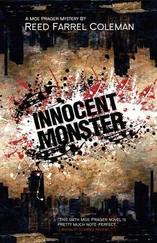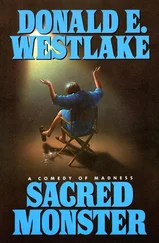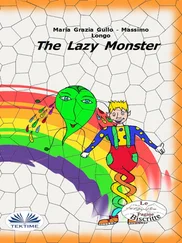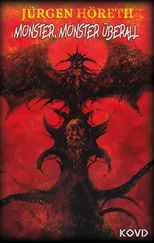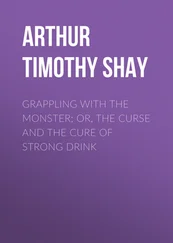ASSISTANT WARDEN IN CHARGE OF EXECUTIONS NEIL HODGES TO THE AUTHOR, HUNTSVILLE PRISON, TEXAS, 1995
Aileen Carol Wuornos shared Death Row with several faces familiar to readers of true crime. The first of which springs to my mind is Judias ‘Judy’ Buenoano. Aged 45, and popularly known as the Black Widow, she had been on Death Row since 1985. Convicted of poisoning her husband, drowning her quadriplegic son by pushing him off a canoe and planting a bomb in her boyfriend’s car, she had the distinction of being the first woman to die in Florida’s electric chair on 30 March 1998.
Deirdre Hunt was sent to Death Row in 1990, and her sentence has since been commuted to life.
Andrea Hicks Jackson, sentenced to death for shooting a police officer in 1983, has also had her sentence reversed.
Virginia Gail Larzelere, aged 49, has recently been given the death penalty for murdering her husband at Edgewater, near Daytona Beach, on 8 March 1991.
Ana M. Cardona, aged 40, was sentenced to death for aggravated child abuse and the first-degree murder of her three-year-old son in Miami on 2 November 1992.
At the time of her execution, Aileen Wuornos was 46 years old but looked a decade older. The condemned woman, wearing an orange T-shirt and blue trousers, was five feet four inches in height and weighed 133 lbs. The characteristic strawberry-blonde hair described by witnesses framed her face, but her eyes were constantly bloodshot. Always looking washed-out, her once-attractive looks had been replaced with a face that life had not treated kindly. She still had the scar between the eyes and burn scars on her forehead. Her body was marked with a long cut along her lower left arm and a crude appendectomy scar across the middle of her abdomen.
The cell in which Lee was confined measured eight feet by ten. It was painted a dull-looking pink, and the ceiling was quite high, maybe 15 feet, which made the room seem larger and more airy than it really was. She had a black-and-white television placed above the stainless-steel toilet on a varnished brown shelf. The furniture consisted of a grey metal footlocker that doubled as a desk, but no table and only a single chair. There was also a dirty, lime-green cupboard at the foot of a metal bed which contained her clothes and personal possessions. Everything had to be locked away at bed-inspection time which could be any time between 9 and 11am. The only view she had of the outside world was a parking lot and a high fence festooned with glittering razor wire. There were no bars in her cell, but a metal door with a small hatch separated her from the rest of the cellblock. It cost the state of Florida $72.39 a day to keep Lee in her place of incarceration.
She spent the long, solitary hours reading books on spiritual growth and writing lengthy letters to her now adopted mother Arlene Pralle. Lee’s lifestyle was spartan and monotonous, and the days and the years rolled indistinguishably and uneventfully past her locked cell door. In the knowledge that 11.3 years is the average length of stay on Death Row prior to execution, Lee knew that, when her death came, it would be a painful end to a painful life.
Up until the botched execution of ‘Tiny’ Davis, Florida administered executions primarily by electric chair and only later by lethal injection. For this reason she was sentenced to die in ‘Old Sparky’. This three-legged electric chair, constructed from oak by prison personnel, was installed at the Florida State Prison in Starke in 1999. The previous chair, dating back to 1923, was also made of oak after the Florida Legislature designated electrocution as the official mode of execution.
When that fateful day arrived, her head and body hair was to be shaved to provide better contact with the moistened copper electrodes attached to her body by the execution team. Sanitary towels would be forced into her vagina and rectum, and cotton wool pushed into her nostrils and ears to prevent the leakage of bodily fluids. In Florida, executioners are anonymous private citizens who are paid $150 per death. A four-second jolt of 2,000 volts is applied, followed by 1,000 volts for the next seven seconds and finally 200 volts for two minutes. Electrocution produces visibly destructive effects on the body, as the internal organs are burned. The prisoner usually leaps forward against the restraints when the switch is thrown. The body changes colour, swells and may even catch fire. The dying person may also lose control of the bladder and bowels, and vomit blood. Lee knew all this, but appeared unfazed. ‘Death does not scare me. God will be beside me taking me up with him when I leave this shell, I am sure of it. I have been forgiven and am certainly sound in Jesus’s name.’
But Lee would die by lethal injection.
Millions of us have been into hospital and recall the jab being given prior to an operation. This pre-med injection causes one to relax before another injection brings about unconsciousness around the count of ten. This is how the idea of sending a condemned inmate to perdition by a similar means came about. The drugs were certainly available, and they were cheap to use. And there was an extra bonus: the proposition of putting someone to death, in this clinical sort of way, necessitated clinical surroundings. Gone were the dread gallows, the ominous electric chair with all its wiring and leather helmet and death mask. Gone, too, was the evil-looking gas chamber with its sickly green walls, its rods, tubes and linkages.
There were benefits as well for the state authorities. The whole idea would appeal to the media and public alike, for execution could not possibly be made more merciful. A team of paramedics would attend to the inserting of a needle into the victim’s right or left arm, and a doctor would be, as with all executions, in attendance to pronounce death.
On Sunday, 29 September 2002, Lee was woken in her cell at Broward and told to shower and dress for the drive north to her place of execution. This would be the last day the hot Florida sun would strike her face, and it would be for only a few moments at that. Heavily shackled, she shuffled into daylight and was assisted into a Florida Department of Corrections truck. Ironically her route would take her north, along I-95 towards the Florida Turnpike, west to Wildwood, then up I-75 to Gainesville. Leaving tourist Florida, with its Miami Beach hotels and Disneyworld and orange trees, far behind, she now entered a poor, rural landscape.
Nick Broomfield describes the journey. ‘Stretch after stretch of flat, unrewarding scraggly pine trees and truck farms passed her by. Tiny post offices, well-attended Baptist churches – a good deal of praying and singing, often stomping and hollering, in the name of the Lord goes on in this part of Texas. They turned north-east along US 24, 30 miles then the road opened out on to a broad plain. To the right is the Union Correctional Institution, and then the Florida State Prison itself, just a rifle shot away across the New River in Bradford County. Interspersed between the prison cattle standing motionless along the roadside were inmate work gangs out with their uniformed guards, who cradled shotguns and wore sunglasses that coruscated in the afternoon light. It was a banal vision of purgatory, the sullen, shuffling convicts toiling under a heavy sun that glinted hard at them from their keepers’ shielded eyes.’
What is now the Union Correctional Institution was formerly the original Florida State Prison, and what is now known as Florida State Prison Main Unit was constructed with the death chamber in 1961. Florida State Prison Main Unit’s title was transferred to the East Unit in 1973, and the old Florida State Prison became the Union Correctional Institution. Lee would spend two nights here before her appointment with death.
Lee was held in a special security cell. The three walls were painted a dirty cream; the barred front of her cage, with an additional mesh screen, looked on to the landing. Lit 24 hours a day, the cell had no table, just a stainless-steel toilet, a hand basin and a bunk covered with a light-green blanket and a grey pillow.
Читать дальше


